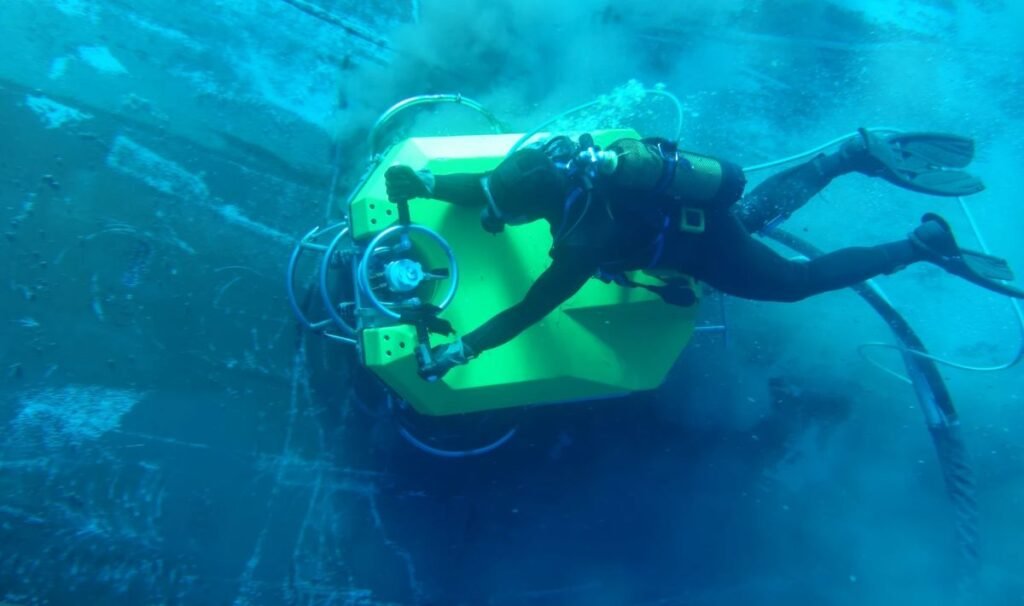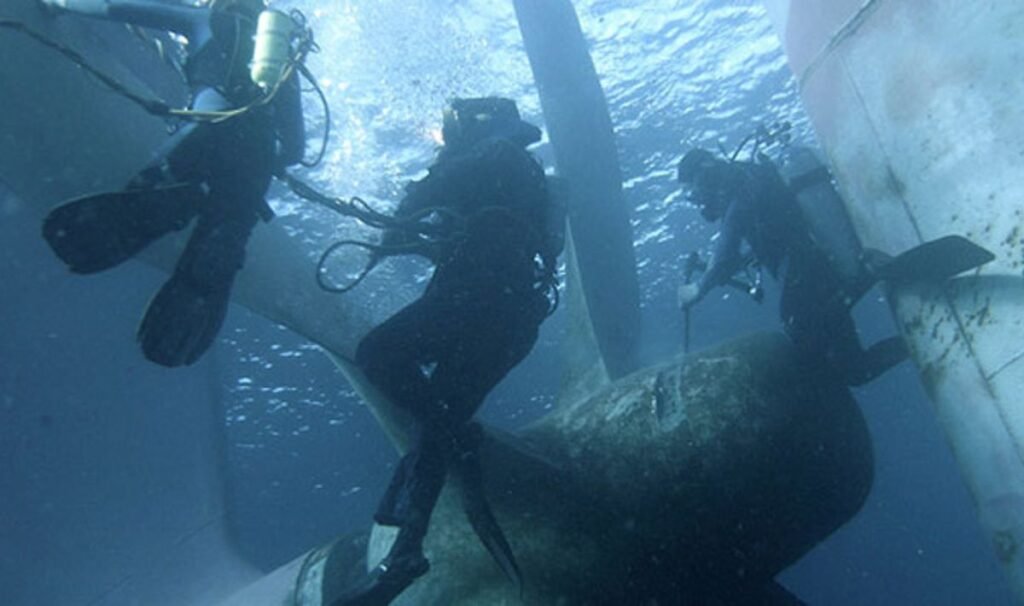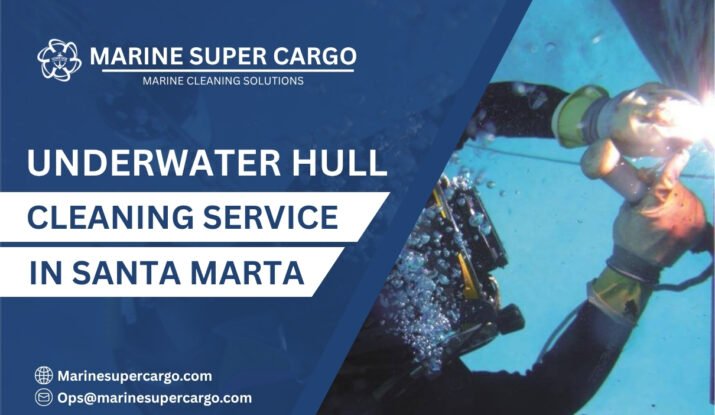Imagine gliding out from Marina Santa Marta, wind in your hair, the coastline fading behind. But beneath the waterline, the real story begins. If you’ve ever wondered why your vessel feels sluggish, uses more fuel, or struggles to reach top speed, chances are the culprit is out of sight—marine biofouling plastered to your hull. That’s where underwater hull cleaning in Santa Marta truly earns its weight in gold.
Santa Marta’s stunning waters, buzzing with marine life and sun, are also a magnet for barnacles, algae, and other stubborn hangers-on. Without routine hull cleaning, you’ll feel the drag—literally and financially. Clean hulls equal fast, efficient, eco-friendly cruising, whether you captain a superyacht, sailboat, or commercial ship.
The Threat of Biofouling in Santa Marta’s Waters
This isn’t just sea slime—it’s a silent enemy. Barnacles, worms, and slimy algae make themselves right at home in Santa Marta’s warm, nutrient-rich Caribbean currents. It’s called biofouling, and it’s one of maritime maintenance’s most expensive headaches. Barnacles and algae form a rough, thickening “beard” that creates drag, making your vessel gobble more fuel and struggle against the current.
How Often Should You Provide Underwater Hull Cleaning in Santa Marta?
Santa Marta’s warm waters mean biofouling is constant. Experts recommend underwater hull cleaning in Santa Marta every 2–3 months for active or moored vessels. High-performance boats may benefit from monthly service.
Cleaning frequency depends on:
- Boat usage
- Docking location (marinas accelerate growth)
- Antifouling paint condition
- Seasonal weather
- Regular visual checks
For port guidelines, visit the Port of Columbia.

Key Methods for Underwater Hull Cleaning in Santa Marta
Diver-Assisted Underwater Hull Cleaning in Santa Marta
The tried-and-true classic. Trained divers equip themselves with brushes, scrapers, and even rotary tools to manually remove fouling from the hull, rudder, propellers, and intakes. They work methodically, section by section—making note of any hull damage, loose fittings, or early signs of corrosion for your records. Divers are indispensable for hard-to-reach places and smaller vessels, plus they give real-time hull feedback.
Robotic and ROV Cleaning Solutions
Welcome to Hull Maintenance’s new industrial revolution! Modern hull cleaning robots (ROVs) can crawl along the hull, using brushes or high-pressure water jets to blast off barnacles and algae. Many of these systems capture removed fouling and filter it instead of discharging it into the ocean, keeping Santa Marta’s marine environment protected. Robotics is a game-changer for large ships and tankers needing fast, repeatable, and eco-conscious cleaning.
Environmental Vacuum and Filtration Technologies
Modern systems use underwater vacuums and multi-stage filtration to capture hull debris, releasing only clean water back to the sea. These technologies ensure compliance with Colombian and global environmental regulations—such as those outlined by the International Maritime Organization (IMO)—while preventing future biofouling spread.
Choosing the Right Service Underwater Hull Cleaning in Santa Marta
Don’t just go for the cheapest quote. Make sure you look for:
- Certified, experienced divers or technicians
- Eco-friendly procedures (ask about debris capture and disposal)
- Full insurance for underwater operations
- A detailed inspection and hull report before and after cleaning
- Flexibility for commercial or private schedules
Providers like Cleanship.co offer global expertise and cater to the unique needs at Santa Marta port. A reputable team will happily share photos, cleaning logs, and even hull health tips.
Step-by-Step: The Professional Process Underwater Hull Cleaning in Santa Marta
- Pre-Clean Inspection
The team visually assesses hull fouling, photographs damage, and plans the cleaning method. - Setup and Safety
Divers prep equipment, or ROV techs coordinate robots and filtration gear. Safety protocols and marina notifications are top priority. - Thorough Cleaning
Systematic cleaning begins—removing fouling from bow to stern, especially rudders, intakes, and propellers. - Environmental Debris Capture
Removed growth, old paint, and organic material is collected and filtered, not dumped back into the bay. - Final Check and Reporting
Another inspection to ensure the hull is clean, damage is documented, and owners get a report with recommendations for ongoing upkeep.
Major Benefits of Regular Underwater Hull Cleaning in Santa Marta
Boosted Performance & Fuel Savings
Even the thinnest layer of slime can burn a hole in your wallet. Proper underwater hull cleaning in Santa Marta restores hydrodynamics, letting engines work less and cruise farther with every drop.
Eco-Responsibility & Marine Compliance
By capturing fouling and toxins, you’re doing your bit for Santa Marta’s precious coral and sea life. Routine cleaning limits the spread of invasive species—important with Colombia’s tightening marine laws.
Hull Longevity & Cost Prevention
Cleaning knocks off barnacles and uncovers early issues like pitting, cracks, or failing antifouling paint. Spotting these clues early saves big on repairs and maximizes hull lifespan.
Environmental and Safety Considerations Underwater Hull Cleaning in Santa Marta
Not all cleaning is equal. Beware of high-pressure jets or harsh chemicals that can damage coatings or pollute the waterway. Always choose environmentally safe tech, and follow Santa Marta’s marina regulations to stay out of legal hot water.
Professional services use vacuum, filtration, and containment systems to prevent pollution and avoid fines, preserving both your vessel and the coastal beauty.

How Much Does Underwater Hull Cleaning in Santa Marta Cost?
Prices range by vessel size, fouling severity, and technology:
- Small yachts/sailboats: USD 150–$400 per cleaning
- Medium to large commercial vessels: $1,000–$4,000 (robotic cleaning, debris recovery, or emergency work at the high end)
- Routine service plans often come with discounts compared to emergency cleans
Always confirm what’s included: inspection, photos, debris removal, and reporting.
Prepping for Your Hull Clean: Top Tips
- Remove loose gear/fenders from the hull area
- Share your hull’s maintenance history and paint type with the provider
- Notify your marina/habormaster before the cleaning date
- Close all underwater hatches and intakes for full safety
- Keep a log of every clean—helps with resale value and warranty
Emerging Trends in Technology: Underwater Hull Cleaning in Santa Marta
Santa Marta is catching the global current of eco-innovation:
- Magnetic and suction robotic cleaners for larger fleets
- Multi-stage environmental vacuum capture and debris filtration
- AI hull monitoring and maintenance tracking
- Biodegradable antifouling systems and smart coatings
These upgrades mean safer, cleaner, and more efficient operations for everyone.
Conclusion
Let’s face it: the real test of your vessel is written below the waterline. Routine underwater hull cleaning in Santa Marta transforms your boating—saving fuel, preventing costly repairs, and protecting ocean health for the next generation of mariners. Invest in your hull, trust the pros, and you’ll glide from Santa Marta’s coast faster, safer, and greener every season.
FAQ:
Q1. How often should I schedule underwater hull cleaning in Santa Marta?
Every 2–3 months for most active vessels; high-use or moored boats may require monthly cleaning for best results.
Q2. Will hull cleaning harm my paint or coatings?
Q3. Is robotic hull cleaning available in Santa Marta?
Q4. Are eco-friendly hull cleaning options available?
Q5. How does regular hull cleaning save money in Santa Marta?
Removing biofouling boosts speed, trims fuel bills by up to 15%, and reduces long-term repair costs by exposing problems before they grow.


